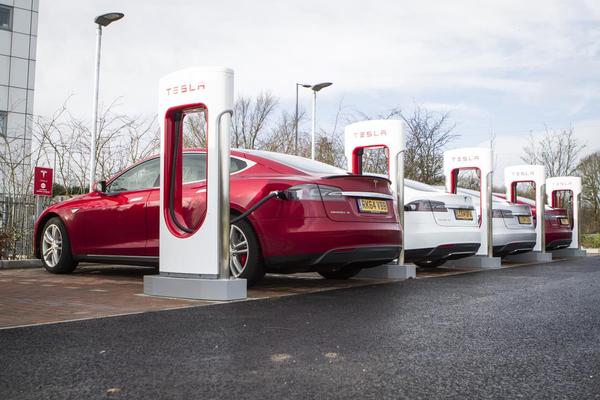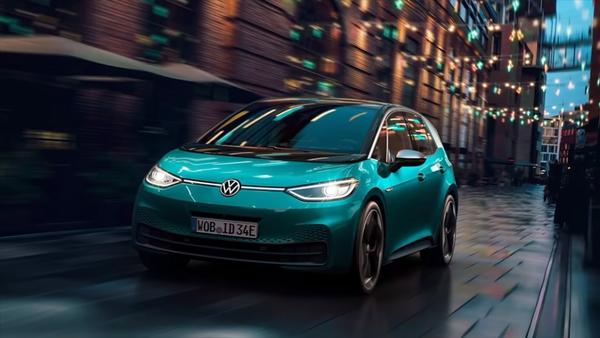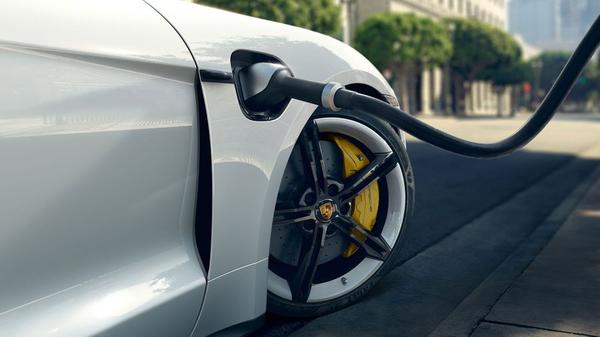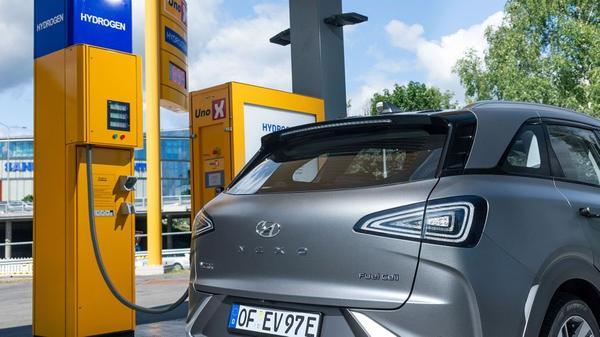Advice
Alternative fuel types explained
Outside of petrol and diesel, what are your options? We look at the different types of hybrid and electric car available, and reveal which will be available after 2030.


Words by: Andrew Woodhouse
Published on 2 March 2021 | 0 min read
If you’re getting confused about the difference between plug-in hybrids, mild hybrids, electric and electrified cars, then you’re not alone.
Names come and go as technology develops, so staying up to date can be tricky. In this guide, we’ll talk you through the different types of alternative fuel vehicles, and help you find the one that best suits you.
Names come and go as technology develops, so staying up to date can be tricky. In this guide, we’ll talk you through the different types of alternative fuel vehicles, and help you find the one that best suits you.
What is an alternatively fuelled vehicle (AFV)?
An alternatively fuelled vehicle (AFV) is a vehicle that runs on something other than petrol or diesel, or combines a fossil fuel with another form of propulsion. The most common types of AFV are electric and hybrids, but there are all sorts of alternative fuels types that we will cover here.
What is an ICE vehicle?
We’ll refer to ICE vehicles throughout, so let’s cover it here. ICE stands for internal combustion engine and refers to traditional petrol- and diesel-only vehicles.
In some hybrids, another form of energy supports the internal combustion engine. In pure electric cars, the internal combustion engine is replaced altogether.
In some hybrids, another form of energy supports the internal combustion engine. In pure electric cars, the internal combustion engine is replaced altogether.

Electric vehicles
An electric vehicle runs off electric power only. They have zero tailpipe emissions (such as CO2 and NOx) and charge off the electric grid – either using home charge points or the public charging network.
Mostly called pure electric or fully electric vehicles, they are also referred to as: • EV – electric vehicle • GEV – grid electric vehicle • BEV – battery electric vehicle • PEV – plug-in electric vehicle We’ll refer to them as EVs in this article. Explore the range of electric cars on Autotrader.
Mostly called pure electric or fully electric vehicles, they are also referred to as: • EV – electric vehicle • GEV – grid electric vehicle • BEV – battery electric vehicle • PEV – plug-in electric vehicle We’ll refer to them as EVs in this article. Explore the range of electric cars on Autotrader.

Hybrid vehicles
There are three types of hybrid on the market today: mild, hybrid electric and plug-in hybrid.
Mild hybrid electric vehicles (MHEVs)
Mild hybrids are basically petrol or diesel cars that use electric power to support their internal combustion engine – mostly to increase efficiency in the engine and system when accelerating.
Calling them hybrids is a bit misleading, as you can’t charge mild-hybrids or drive more than a few metres in electric mode in most cases. This is a name that might drop out of use or get repurposed further down the line, and you’ll probably hear these referred to as ‘electrified’ vehicles going forward.
Calling them hybrids is a bit misleading, as you can’t charge mild-hybrids or drive more than a few metres in electric mode in most cases. This is a name that might drop out of use or get repurposed further down the line, and you’ll probably hear these referred to as ‘electrified’ vehicles going forward.
Hybrid electric vehicles (HEVs)
Hybrid electric vehicles switch between, or blend, a petrol engine and electric motor to prioritise efficiency or power. This can be done automatically, or by selecting different drive modes.
Hybrid electric vehicles have limited electric-only range, so you’ll only cover short distances and/or low speeds on electric power. Also known as: • Parallel hybrid • Full hybrid • Self-charging hybrid
Hybrid electric vehicles have limited electric-only range, so you’ll only cover short distances and/or low speeds on electric power. Also known as: • Parallel hybrid • Full hybrid • Self-charging hybrid
Plug-in hybrids (PHEVs)
PHEVs are the hybrids you plug in to charge. They can switch from electric to petrol or diesel. PHEVs tend to use their electric power up first, then run on fossil fuels as a back-plan.
PHEV battery capacity is high enough to cover most, or all, of your journey using electric power only (depending on the car and the length of your journey, naturally), so PHEVs need plugging into a charging point. Overall, PHEVs use less fuel than ICE vehicles and produce fewer emissions than HEVs and electrified vehicles. Explore the range of hybrids available on Autotrader.
PHEV battery capacity is high enough to cover most, or all, of your journey using electric power only (depending on the car and the length of your journey, naturally), so PHEVs need plugging into a charging point. Overall, PHEVs use less fuel than ICE vehicles and produce fewer emissions than HEVs and electrified vehicles. Explore the range of hybrids available on Autotrader.
What’s a range extender?
Range extenders are mostly obsolete now, but you may still come across the term.
Range extenders use an internal combustion engine as a small generator for the electric batteries. Unlike other types of hybrid (including PHEVs), range-extenders are only driven by the electric motor – they use petrol or diesel to support the motor, not to drive the wheels. As the charging infrastructure improves and range anxiety becomes less of a thing, there’ll be less need for range extender technology.
Range extenders use an internal combustion engine as a small generator for the electric batteries. Unlike other types of hybrid (including PHEVs), range-extenders are only driven by the electric motor – they use petrol or diesel to support the motor, not to drive the wheels. As the charging infrastructure improves and range anxiety becomes less of a thing, there’ll be less need for range extender technology.
Which types of hybrid are getting banned?
As of 2035, anything that isn’t a pure electric car or PHEV is getting discontinued. This includes MHEVs, HEVs and ICE (petrol and diesel) engines.
Under current plans, the sale of new PHEVs will be banned from 2035 – leaving pure electric cars as the only new car you’ll be able to buy. Currently, you’ll be able to pick up every other type of car on the used car market. Learn more about the 2035 “petrol ban”.
Under current plans, the sale of new PHEVs will be banned from 2035 – leaving pure electric cars as the only new car you’ll be able to buy. Currently, you’ll be able to pick up every other type of car on the used car market. Learn more about the 2035 “petrol ban”.

Plug-ins explained
You’ll probably hear more and more about "plug-ins". It’s pretty self-explanatory: these are cars that can be plugged in to charge. These are vehicles in which you’ll be able to do significant miles on electric power.
Plug-in is an umbrella term that covers plug-in electric vehicles (EVs) and plug-in hybrid electric vehicles (PHEVs). We cover the different types of plugs and chargers in our guide to electric car charging.
Plug-in is an umbrella term that covers plug-in electric vehicles (EVs) and plug-in hybrid electric vehicles (PHEVs). We cover the different types of plugs and chargers in our guide to electric car charging.
What’s the difference between electric cars and electrified cars?
They sound similar, but they’re different:
• An electric car runs on electric power only. • An electrified car is supported by electric power. This covers everything from plug-in hybrids to eAssist features on an MHEV, depending on the manufacturer.
• An electric car runs on electric power only. • An electrified car is supported by electric power. This covers everything from plug-in hybrids to eAssist features on an MHEV, depending on the manufacturer.
Acronyms:
EV - electric vehicle: a vehicle that runs off electric power only.
PEV – plug-in electric vehicle: a vehicle that can be plugged into the grid, charged and runs off electric power only. An electric car, essentially. PHEV – plug-in hybrid electric vehicle: a vehicle that can be plugged into the grid, charged and run off electric power but can also run of petrol or diesel. If you’re thinking about hybrids, this is probably the technology you have in mind. ULEV – ultra-low emissions vehicles: a vehicle that emits 75g/km CO2 or less. ZTEV – zero tailpipe emissions vehicle: cars that do not produce any tailpipe emissions, e.g. electric-only vehicles.
PEV – plug-in electric vehicle: a vehicle that can be plugged into the grid, charged and runs off electric power only. An electric car, essentially. PHEV – plug-in hybrid electric vehicle: a vehicle that can be plugged into the grid, charged and run off electric power but can also run of petrol or diesel. If you’re thinking about hybrids, this is probably the technology you have in mind. ULEV – ultra-low emissions vehicles: a vehicle that emits 75g/km CO2 or less. ZTEV – zero tailpipe emissions vehicle: cars that do not produce any tailpipe emissions, e.g. electric-only vehicles.

Other alternative fuel types
There are other types of alternatively fuelled vehicles. These aren’t quite as popular or prevalent yet, but advances in technology mean anything could happen in the coming years.
Hydrogen fuel cell electric vehicle (FCEV)
Hydrogen fuel cell electric vehicles, or just hydrogen fuel cells, use a chemical reaction between hydrogen and oxygen to create electricity and power the car.
These are also zero-emission vehicles, as only water comes out of the tailpipe, and, until all electricity comes from renewable sources, they are the only truly environmentally friendly vehicles. The technology is very new, and there isn’t much of an infrastructure in place to support them yet. But, they’ll avoid the 2030 ban and plenty of brands are currently working on hydrogen-powered cars for mass market adoption. One to watch.
These are also zero-emission vehicles, as only water comes out of the tailpipe, and, until all electricity comes from renewable sources, they are the only truly environmentally friendly vehicles. The technology is very new, and there isn’t much of an infrastructure in place to support them yet. But, they’ll avoid the 2030 ban and plenty of brands are currently working on hydrogen-powered cars for mass market adoption. One to watch.
Bi-fuel
Bi-fuel vehicles run on a petrol or diesel ICE, supported by another type of alternative fuel; normally hydrogen, natural gas or liquefied petroleum gas (LPG, a mix of propane and butane).
Synthetic fuel
Also called eFuels, synthetic fuels are created using electrolysis to separate water into oxygen and hydrogen. The hydrogen is then mixed with CO2 to make synthetic methanol, which is refined into synthetic petrol or diesel.
Learn more about synthetic fuels.
Learn more about synthetic fuels.